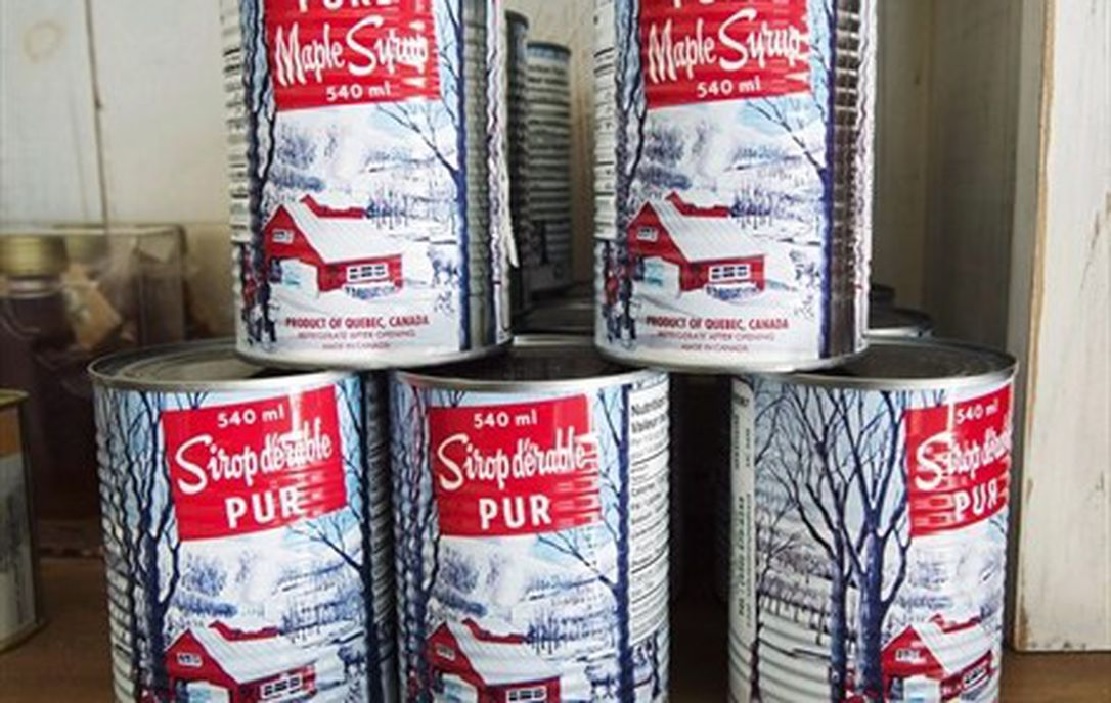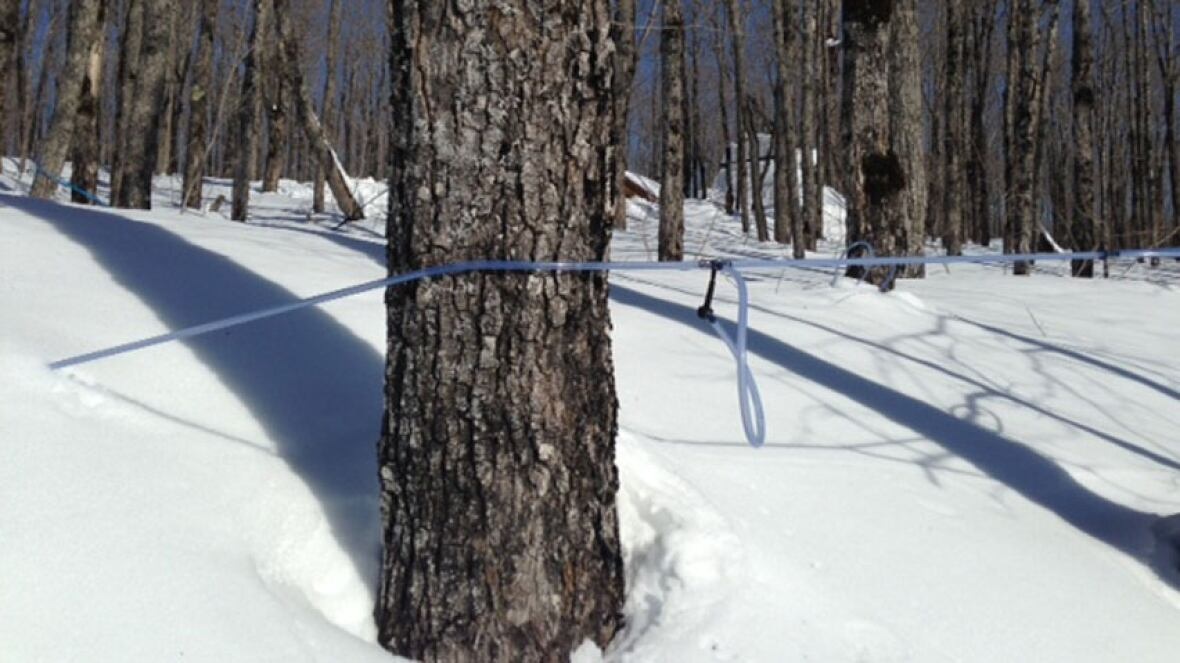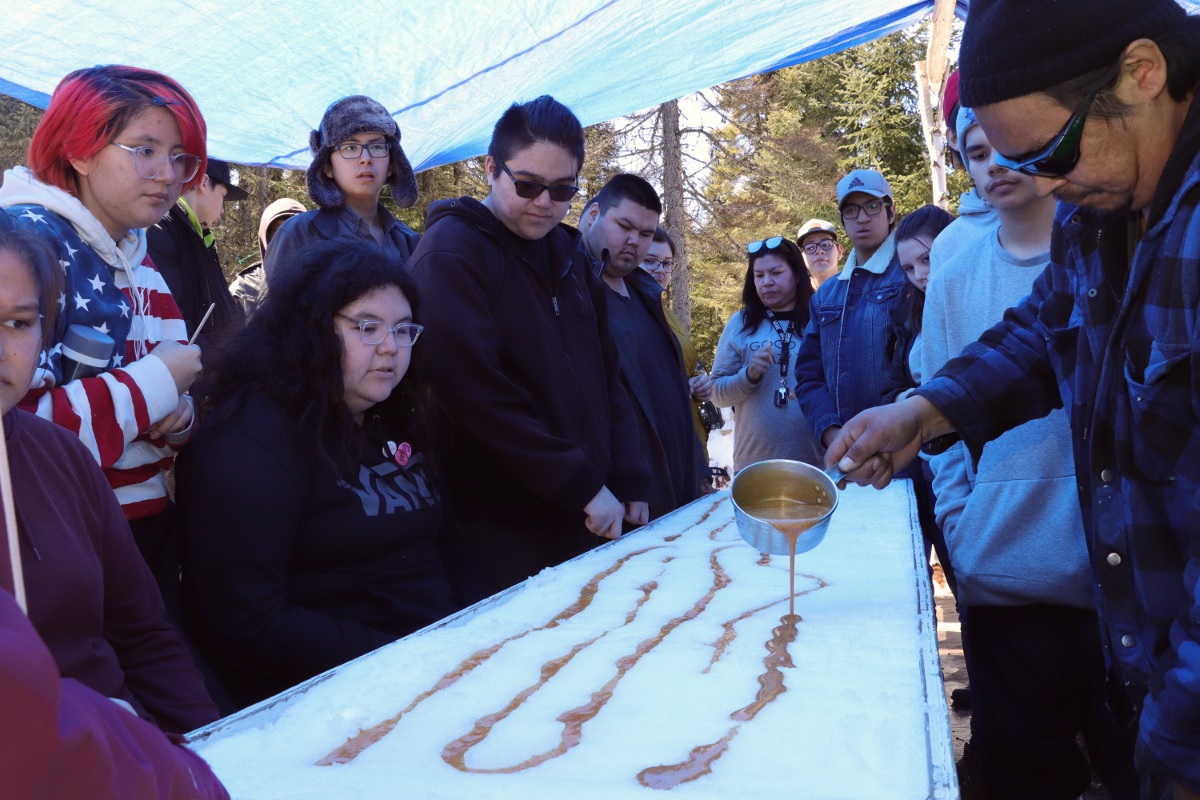Those with a sweet tooth love maple syrup, a delicious product that nature has provided.
Coming exclusively from ‘sugar’ maple trees, it was a discovery learned from indigenous tribes in northeastern north America who for centuries had been collecting the slightly sweet sap of the trees and boiling off the water to create a deliciously sweet toffee-like substance.
Canada produces over 80 per cent of the world supply, and most of that comes from Quebec followed by Ontario, New Brunswick and Nova Scotia to far lesser amounts.
It’s also produced in the north-eastern U.S. in states like Vermont, Maine, New York and a few others.

Although maple syrup can be sold in a wide variety of containers, the most common in Canada are 540ml tins with labelling like this (Ryan Remiorz-CP)
The sap only runs for a matter of weeks during the transition from winter to spring when the days are just above freezing, and the nights just below.

The modern method is to connect all the taps together with the lines going directly to the sugar shack. In recent years producers have added a slight vacuum to the lines to increase production. (Tori Weldon/CBC)
This year with the typically short season coming to an end, Quebec maple syrup producers have announced a record harvest at just over 79 million kilos.
While the pandemic affected some of the human aspects of production and required producers to develop newer disinfection and ‘social distance’ measures, it did not affect the trees where a chilly April seems to have lengthened and aided the flow this year
- RCI: Dec 2014: Protecting Canadian maple syrup
- RCI: May 2019: Atikamekw-maple syrup ancestral tradition passed on with passion
- RCI: May 2020″ Canadian chemists develop artificial ‘tongue of gold’ to taste maple syrup
In a news release Serge Beaulieu, Québec Maple Syrup Producers president since 2007 said, “The resilience and ingenuity of our maple syrup producers during the pandemic has certainly paid off, and I couldn’t be happier. This most unusual year is one we won’t forget. It will go down in the history of our organization”.
The Quebec Maple Syrup Producers represents some 11,300 maple syrup producers and 7,400 related businesses in the province.

Another tradition at sugaring off time, is the pouring of the warm liquid onto a packed snow surface. The snow cools the liquid into a sticky, sweet (delicious) toffee. Small amounts are then rolled up onto a stick (often a popsicle stick) into an easily held treat. ( Marie-Claude Simard- RCI)
Producers in both Canada and U.S. however want consumers to be aware of ‘fake’ syrup. Many brands marketed as ‘syrup’ may look and pour like maple syrup, but actually contain none at all, They are made most often with corn syrup and sweeteners. Even maple flavoured ice cream and cereals have been pointed out for not having any actual maple syrup in the product.
Why fake products are made is fairly easy to understand. Maple syrup production is a labour intensive process and thus costly as well, whereas artificial product is easily made and so cheaper to create and with a higher profit margin for manufacturers.
In 2016 maple producers launched a request with the U.S Food and Drug Administration to investigate ‘maple’ labelling claims on a variety of products.
For consumers, they say to read the label carefully, to see that you’re actually getting the all natural real maple syrup.
Additional information-sources







For reasons beyond our control, and for an undetermined period of time, our comment section is now closed. However, our social networks remain open to your contributions.